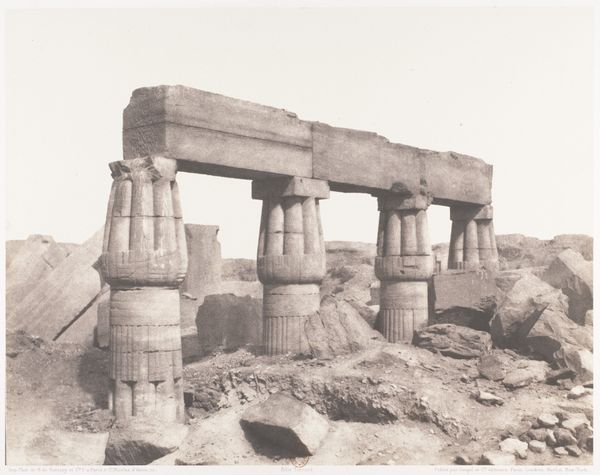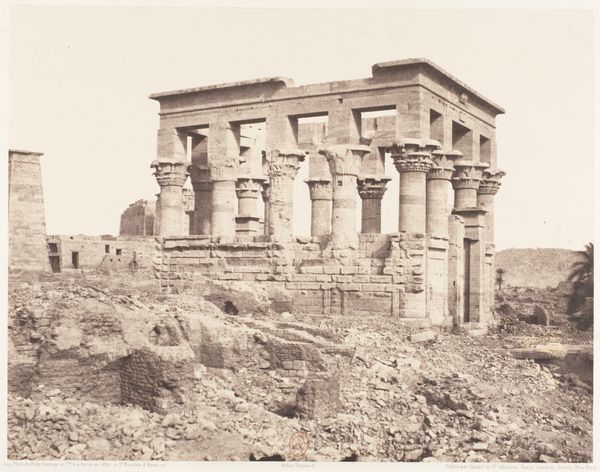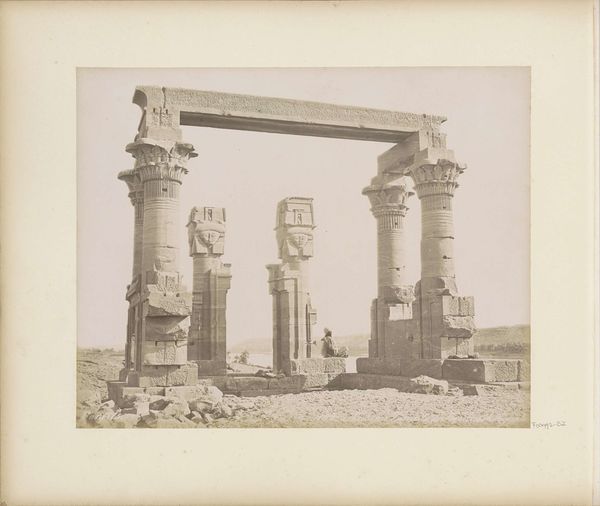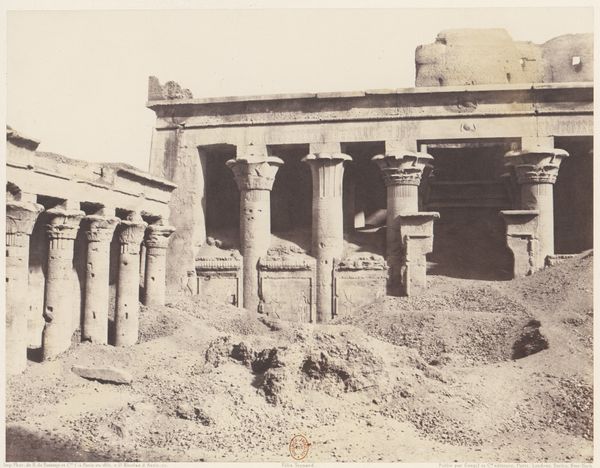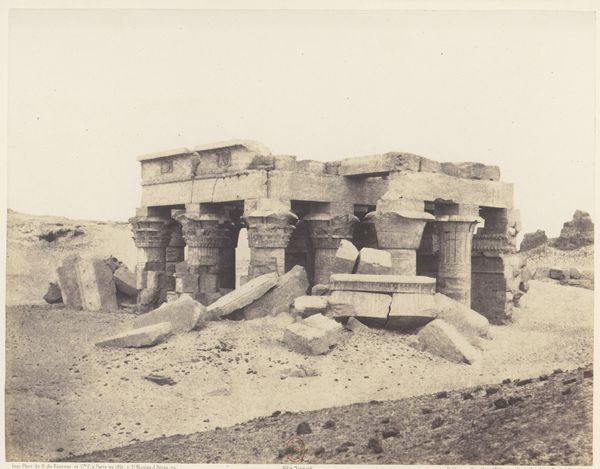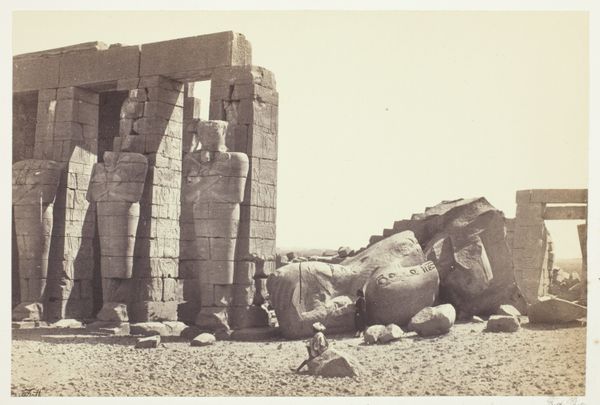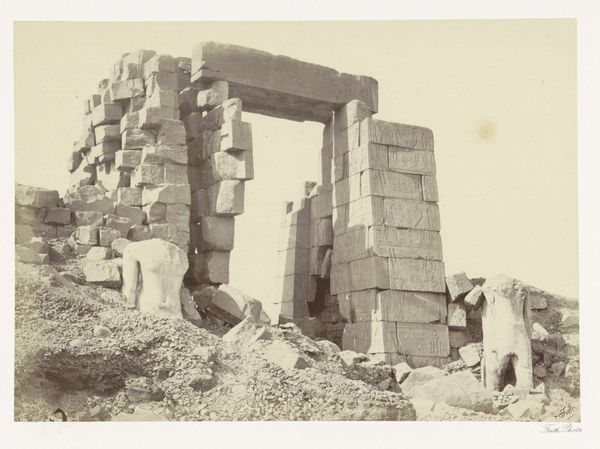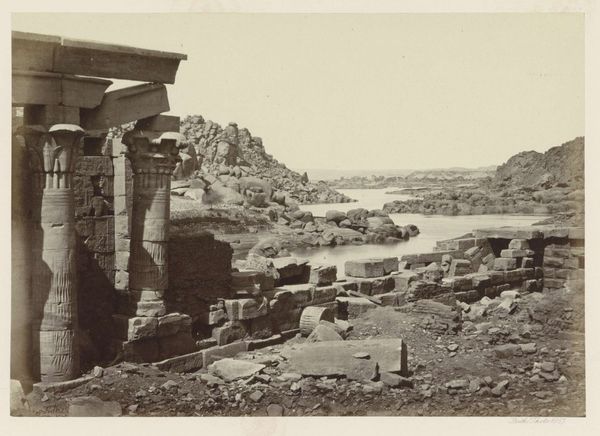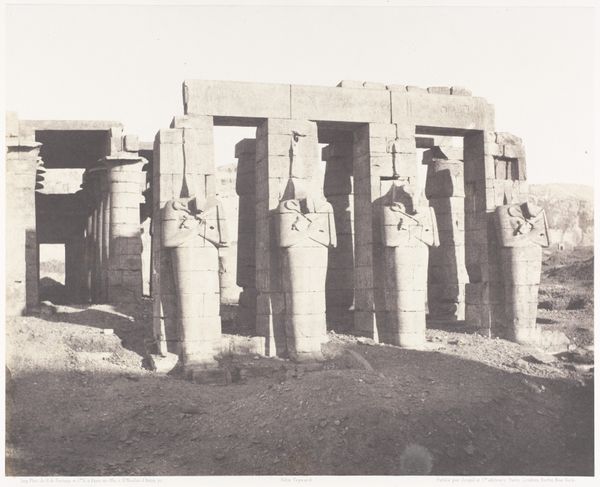
photography, albumen-print
#
landscape
#
ancient-egyptian-art
#
outdoor photograph
#
outdoor photo
#
outdoor photography
#
photography
#
ancient-mediterranean
#
column
#
orientalism
#
albumen-print
#
realism
Copyright: Public Domain
Editor: This is "Wady Kardassy, Nubia," a photograph taken by Francis Frith in 1857. It's an albumen print depicting the ruins of an ancient structure on the banks of the Nile. The materiality of the print itself, the warm sepia tones, evoke a sense of faded grandeur and history. What can you tell me about it? Curator: What interests me immediately is the process. Frith, a British photographer, ventured to Egypt during a period of intense colonial interest. He employed the collodion process, a complex and laborious technique requiring portable darkrooms and significant material investment. We should think about who had access to this technology and how these photographs were consumed. Editor: So, the materials and labor behind the image are central to understanding its meaning? Curator: Absolutely. Consider the social context: these images weren't just records; they were commodities circulated in Europe, shaping perceptions of Egypt and its place in the global economy. The 'orientalism' tag here hints at how Frith's work contributed to a particular vision of the East for a Western audience. Editor: It makes me wonder about the local population too, how their labor might have been involved, or how they were presented in the picture. There's a lone figure near the ruins; a seemingly timeless part of the landscape, yet undoubtedly caught in the flux of colonialism. Curator: Precisely! The figure serves a compositional function and also a commentary on how labour and perhaps even exploitation were a part of the imagery’s production. These albumen prints weren't simply objective representations; they were carefully constructed products of a specific time, reflecting and reinforcing power dynamics. How does recognizing this shift your perspective of the piece? Editor: It encourages me to move beyond appreciating its beauty and to consider its implications and cultural work. I can appreciate how materiality and process have everything to do with the art and how to properly interpret and view it. Curator: Exactly! Thinking critically about materials and production can radically change our engagement with visual culture.
Comments
No comments
Be the first to comment and join the conversation on the ultimate creative platform.


